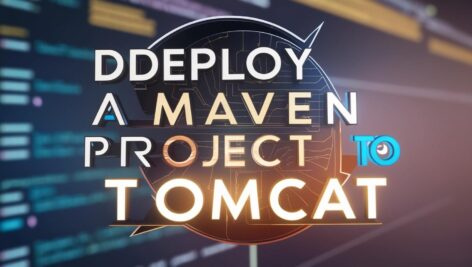Deploying a Maven project to Apache Tomcat should be straightforward, but compilation errors due to missing dependencies or misconfigured builds can derail your progress. In this guide, we’ll resolve common pom.xml issues, integrate local libraries, and ensure your WAR file deploys successfully to Tomcat.
The Problem: Maven Build Failures
When building a Maven project for Tomcat, you might encounter errors like:
[ERROR] cannot find symbol [ERROR] symbol: class JSONHandler
[ERROR] package org.ccode.asset.plugin does not existThese occur because:
- Missing Dependencies: Local JARs or modules aren’t included in the build.
- Incorrect Java Version: Maven isn’t configured for the right JDK (e.g., Java 17 vs. 23).
- Improper WAR Packaging: Dependencies aren’t bundled in
WEB-INF/lib.
Step-by-Step Solution
1. Build and Install Local Dependencies
If your project depends on a local library (e.g., another Eclipse/Maven project):
# Navigate to the library project directory
cd /path/to/library-project
mvn clean installThis installs the JAR into your local Maven repository (~/.m2), making it available to other projects.
2. Add Dependencies to pom.xml
Include the local library and required Maven dependencies in your WAR project’s pom.xml:
<dependencies>
<!-- Local library -->
<dependency>
<groupId>org.ccode.asset</groupId>
<artifactId>your-library</artifactId>
<version>1.0.0</version>
</dependency>
<!-- Other dependencies (e.g., Spring, Jakarta EE) -->
<dependency>
<groupId>org.springframework</groupId>
<artifactId>spring-webmvc</artifactId>
<version>6.1.6</version>
</dependency>
</dependencies>3. Configure Maven Plugins
Compiler Plugin: Set Java Version
Ensure Maven uses JDK 17 (replace 17 with your Tomcat-compatible version):
<build>
<plugins>
<plugin>
<groupId>org.apache.maven.plugins</groupId>
<artifactId>maven-compiler-plugin</artifactId>
<version>3.13.0</version>
<configuration>
<source>17</source>
<target>17</target>
</configuration>
</plugin>War Plugin: Bundle Dependencies
Package all dependencies into WEB-INF/lib:
<plugin>
<groupId>org.apache.maven.plugins</groupId>
<artifactId>maven-war-plugin</artifactId>
<version>3.4.0</version>
<configuration>
<webXml>src/main/webapp/WEB-INF/web.xml</webXml>
<failOnMissingWebXml>false</failOnMissingWebXml>
</configuration>
</plugin>
</plugins>
</build>4. Build the WAR File
Run in your project directory:
mvn clean packageThis generates a WAR file at target/your-project.war, including all dependencies in WEB-INF/lib.
5. Deploy to Tomcat
- Copy the WAR file to Tomcat’s
webappsdirectory. - Start Tomcat:
$CATALINA_HOME/bin/startup.sh # Linux
%CATALINA_HOME%\bin\startup.bat # Windows- Access your app at
http://localhost:8080/your-project.
Common Pitfalls & Fixes
- Java Version Mismatch:
- Confirm
<source>and<target>inpom.xmlmatch your JDK (e.g., 17). - Set
JAVA_HOMEto the correct JDK. - Missing Local JARs:
- Run
mvn installon the library project first. - Check
~/.m2for the installed artifact. - Incomplete WAR File:
- Verify
WEB-INF/libcontains all JARs after packaging.
Best Practices
- Use Maven Repositories: Prefer remote repos (Maven Central) over local JARs.
- Test Java Compatibility: Tomcat 10+ requires Jakarta EE (Java 11+).
- Automate Deployments: Integrate with CI/CD tools like Jenkins or GitHub Actions.
Keywords
Maven Tomcat deployment, fix Maven compilation errors, local dependencies in Maven, Maven WAR plugin configuration, Java 17 Maven build, resolve missing symbols in Maven, Tomcat WAR file setup.
By following these steps, you’ll streamline Maven builds for Tomcat and avoid common dependency issues. For large projects, consider modularizing code or using a parent POM to manage dependencies centrally.


